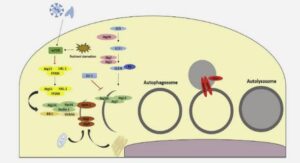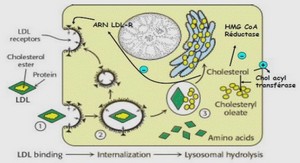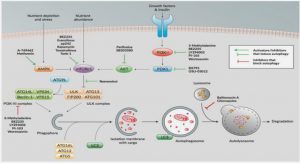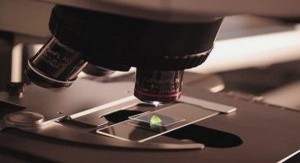Mercury speciation in seafood using isotope dilution analysis: a (critical) review
Introduction
Mercury (Hg) is an element occurring naturally in all environmental compartments. The Earth‟s crust is the primary source of Hg, releasing 2700 to 6000 tons of elemental Hg (Hg°) into the atmosphere every year [1]. The second natural Hg emission source is volcanic activity, accounting for up to 2000 tons of emitted Hg° [2, 3]. The available Hg concentration in the environment is increased by anthropogenic sources such as mineral exploitation (mining lead and zinc), combustion products (coal – fuel oil), industrial waste (chlorine industry, soda, etc.) and waste incineration [4, 5]. Mercury is used in a wide range of industrial sectors (batteries, cables and electrical switches, measurement devices, dental amalgams, lamps), which result in it being released into the environment. Mercury is present in the environment as elemental mercury (Hg°), inorganic mercury (iHg) and organic mercury (mainly methylmercury, MeHg). Hg° and iHg are released into the air and deposited in soil, water and sediments. They are then transformed via biotic or abiotic reactions into MeHg. This species enters biota (plankton, phytoplankton) by passive absorption or via food. It then associates with the soluble part of the organism due to the complexation of MeHg with aminoacid containing a thiol (e.g. cysteine) and bioaccumulates. MeHg is also biomagnified, as iHg is not effectively retained by the organism [11]. Seafood is the primary source of human contamination by MeHg [11-13]. Over 90% of MeHg is absorbed through the gastrointestinal tract, then transferred into the bloodstream due to its complexation with thiol and to active transport, and distributed throughout the body. With oral exposure, the central nervous system is organic mercury’s main target organ, particularly during foetal development. The toxic effects are alteration of sensory functions (sight, hearing), motor coordination, memory, attention and learning [13-15]. The toxicity of inorganic mercury causes renal lesions, neurotoxicity and cardiovascular disorders. In the most extreme cases, it can cause death as was the case in Minamata, Niigata and Iraq [16, 17]. As a safeguard for human health, maximum permissible levels of Hg in fish (0.50 or 1 mg kg-1 essentially for predatory fish) and shellfish (0.50 mg kg-1 ) have been set by Regulation (EC) No 629/2008 to limit dietary exposure of consumers [18]. Furthermore, in 2003 the Joint FAO/WHO Expert Committee on Food Additives (JECFA) established a Provisional Tolerable Weekly Intake (PTWI) of 1.6 µg MeHg/kg bw and 5 µg THg/kg bw [19]. In 2010, the PTWI for THg was withdrawn by the Committee and replaced by a PTWI for inorganic mercury (iHg) of 4 μg/kg bw [20]. This new PTWI is applicable to dietary exposure to total mercury from foods other than fish and shellfish. For MeHg in these foods, the previously established PTWI should be applied Currently available contamination values in seafood are based on THg concentrations and evaluation of MeHg exposure is based on a simplifying assumption which considers that the average percentage of Hg present as methylated mercury in the flesh of fish is 84% of THg (MeHg = 0.84 THg) with a 15% variation around this value between species and within them, according to the fishing area [21]. This hypothesis was challenged by studies which have shown that MeHg may represent a smaller share of THg in some fish [22, 23]. This discovery confirms the need to estimate levels of MeHg, in addition to THg concentrations, to obtain more specific toxicological reference values and recommendations. After a short summary of the most widely developed Hg speciation analysis methods, isotope dilution analysis (IDMS) will be introduced. The advantages and principal applications of this innovative quantification technique will then be presented and discussed.
Mercury speciation analysis
The methods developed to perform Hg speciation analysis involve the coupling of a powerful separation technique (liquid or gas chromatography, capillary electrophoresis) with a selective and sensitive (elemental) detection method (fluorescence spectrometry, plasma source coupled with emission spectrometry or mass spectrometry) [24-26]. Gas chromatography coupled with inductively coupled plasma mass spectrometry (GC/ICP-MS) has rapidly conquered the field of trace and ultra-trace elemental analysis due to the high resolving power of the capillary GC technology, which offers excellent separation of Hg species and the sensitive multi-elemental and multi-isotopic detection capabilities of ICP-MS. Furthermore, this analytical set-up offers the best opportunity to perform speciated isotope dilution mass spectrometry.Extraction and derivatisation steps are common for most sample preparation methods involved in Hg speciation analysis by GC-ICP-MS. The main extraction method used is microwave assisted extraction (MAE) due to its speed, efficiency and low occurrence of methylation (M) and demethylation (D) reactions [28-30]. For the derivatisation of Hg species, alkylating reagents such as sodium tetrapropylborate (NaBPr4) and sodium tetraethylborate (NaBEt4) are mainly used because derivation takes place in an aqueous medium, the natural environment of most biological samples . The recent development of IDMS has drastically improved the accuracy and quality of Hg speciation analysis results. Indeed, the use of isotopically enriched species (i.e. spikes) as tracers overcame the traditional problems related to non-quantitative recoveries and the formation of Hg artefacts that particularly occur during the extraction and derivatisation steps .
Isotope dilution analysis
Isotope dilution analysis (IDMS) directly refers to the mass and the mole, the fundamental units of the international system of measurement. This quantification technique is consequently inherently superior to other methods (i.e. the external calibration or standard addition methods) used for the determination of trace elements. In IDMS, quantification is based on the measurement of the isotope ratio, making quantitative recoveries unnecessary, in samples where the initial isotopic composition has been altered by the addition of known amounts of one or more spike(s). Provided that spikes are in equivalent forms to natural Hg species, and that complete isotope equilibrium with them was reached, they will act as “ideal” internal standards and rearrangement reactions will be easily detected. This technique is used exclusively in combination with a mass spectrometer and especially an ICP-MS, because its specificity improves the accuracy and the precision of the measured isotope ratios. Moreover, sample preparation is generally simpler than with MS analysis. IDMS is considered to be a definitive method, offering accurate determination of Hg species with small uncertainties and has been the subject of numerous review articles [26, 27, 32, 39, 40]. Furthermore, it can be applied for routine tests but also for diagnostics or to assist in the development of new methods. The use of spikes for trace element speciation analysis in biological and environmental matrices has increased considerably since the first experiments in the 1950s [41-43]. There are two different modes of IDMS application, i.e. species-unspecific (SU) or species-specific (SS) spiking mode, as explained in Figure 1.
Species-unspecific spiking mode isotope dilution analysis
The SU spiking mode was generally used because of a lack of commercially available isotopically enriched mercury species identical to the species of interest, and is exclusively limited to the correction of errors derived from the detection step. Indeed, after a complete separation of endogenous species, spikes were added to and mixed with the separated natural species, before the ionisation and detection process, in order to accurately measure the corresponding isotope ratio [27]. Nowadays, many Hg isotope tracers are available and the SU spiking mode is usually replaced by the SS spiking mode.





